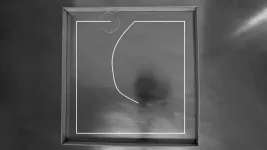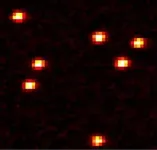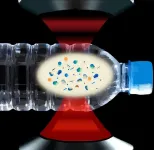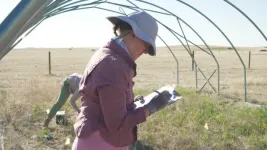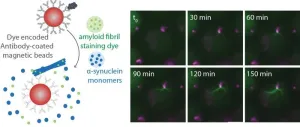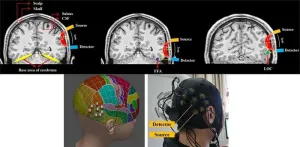(Press-News.org) Researchers have developed a new soft robot design that engages in three simultaneous behaviors: rolling forward, spinning like a record,and following a path that orbits around a central point. The device, which operates without human or computer control, holds promise for developing soft robotic devices that can be used to navigate and map unknown environments.
The new soft robots are called twisted ringbots. They are made of ribbon-like liquid crystal elastomers that are twisted – like a rotini noodle – and then joined together at the end to form a loop that resembles a bracelet. When the robots are placed on a surface that is at least 55 degrees Celsius (131 degrees Fahrenheit), which is hotter than the ambient air, the portion of the ribbon touching the surface contracts, while the portion of the ribbon exposed to the air does not. This induces a rolling motion; the warmer the surface, the faster the robot rolls.
“The ribbon rolls on its horizontal axis, giving the ring forward momentum,” says Jie Yin, corresponding author of a paper on the work and an associate professor of mechanical and aerospace engineering at North Carolina State University.
The twisted ringbot also spins along its central axis, like a record on a turntable. And as the twisted ringbot moves forward it travels in an orbital path around a central point, essentially moving in a large circle. However, if the twisted ringbot encounters a boundary – like the wall of a box – it will travel along the boundary.
“This behavior could be particularly useful for mapping unknown environments,” Yin says.
The twisted ringbots are examples of devices whose behavior is governed by physical intelligence, meaning their actions are determined by their structural design and the materials they are made of, rather than being directed by a computer or human intervention.
The researchers are able to fine-tune the behavior of the twisted ringbot by engineering the geometry of the device. For example, they can control the direction that the twisted ringbot spins by twisting the ribbon one way or the other. Speed can be influenced by varying the width of the ribbon, the number of twists in the ribbon, and so on.
In proof-of-concept testing, the researchers showed that the twisted ringbot was able to follow the contours of various confined spaces. Video of the twisted ringbot can be found here: https://youtu.be/V6Ah_K1x4-8?si=n2B7A7iCyBsKs2vP.
“Regardless of where the twisted ringbot is introduced to these spaces, it is able to make its way to a boundary and follow the boundary lines to map the space’s contours – whether it’s a square, a triangle and so on,” says Fangjie Qi, first author of the paper and a Ph.D. student at NC State. “It also identifies gaps or damage in the boundary.
“We were also able to map the boundaries of more complex spaces by introducing two twisted ringbots into the space, with each robot rotating in a different direction,” Qi says. “This causes them to take different paths along the boundary. And by comparing the paths of both twisted ringbots, we’re able to capture the contours of the more complex space.”
“In principle, no matter how complex a space is, you would be able to map it if you introduced enough of the twisted ringbots to map the whole picture, each one giving part of it,” says Yin. “And, given that these are relatively inexpensive to produce, that’s viable.
“Soft robotics is still a relatively new field,” Yin says. “Finding new ways to control the movement of soft robots in a repeatable, engineered way moves the field forward. And advancing our understanding of what is possible is exciting.”
The paper, “Defected Twisted Ring Topology For Autonomous Periodic Flip-Spin-Orbit Soft Robot,” will be published the week of January 8 in Proceedings of the National Academy of Sciences. The paper was co-authored by Yanbin Li and Yao Zhao, postdoctoral researchers at NC State; Yaoye Hong, a recent Ph.D. graduate of NC State; and Haitao Qing, a Ph.D. student at NC State.
The work was done with support from the National Science Foundation under grants 2005374 and 2126072.
END
New soft robots roll like tires, spin like tops and orbit like moons
2024-01-08
ELSE PRESS RELEASES FROM THIS DATE:
Bottled water can contain hundreds of thousands of previously uncounted tiny plastic bits, study finds
2024-01-08
In recent years, there has been rising concern that tiny particles known as microplastics are showing up basically everywhere on Earth, from polar ice to soil, drinking water and food. Formed when plastics break down into progressively smaller bits, these particles are being consumed by humans and other creatures, with unknown potential health and ecosystem effects. One big focus of research: bottled water, which has been shown to contain tens of thousands of identifiable fragments in each container.
Now, using newly refined technology, researchers have entered a whole ...
EMBARGOED UNTIL JAN. 8 @ 3 PM EST: UTHealth Houston study: EBV-specific T-cells play key role in development of multiple sclerosis
2024-01-08
The body’s immune response to Epstein-Barr virus (EBV) may play a role in causing damage in people with multiple sclerosis, according to a new study led by UTHealth Houston.
EBV infection has long been associated with multiple sclerosis, but how the infection might contribute to multiple sclerosis has not been clear. More than 95% of people have been infected with this very common virus; however, it typically remains in its latent stage and doesn’t cause any issues. In some cases, though, the T-cells specific for the EBV infection may cause ...
Colorado State researcher leads global study of extreme drought impacts on grasslands and shrublands
2024-01-08
EMBARGO: THIS CONTENT IS UNDER EMBARGO UNTIL 3 P.M. U.S. EASTERN STANDARD TIME ON JANUARY 8. INTERESTED MEDIA MAY RECIVE A PREVIEW COPY OF THE JOURNAL ARTICLE IN ADVANCE OF THAT DATE OR CONDUCT INTERVIEWS, BUT THE INFORMATION MAY NOT BE PUBLISHED, BROADCAST, OR POSTED ONLINE UNTIL AFTER THE RELEASE WINDOW.
A global study organized and led by Colorado State University scientists shows that the effects of extreme drought – which is expected to increase in frequency with climate change – has been greatly underestimated for grasslands and shrublands.
The findings – published in Proceedings of the National Academy of Sciences – quantify the impact of extreme ...
McMaster researchers discover molecular ‘barcode’ used by bacteria to secrete toxins
2024-01-08
Researchers at McMaster University have discovered a molecular “barcode” system used by disease-causing bacteria to distinguish between beneficial and toxic molecules.
Published in the Proceedings of the National Academy of Sciences (PNAS), the new study shows that many bacteria can figuratively scan genetic codes to learn which proteins to keep and which proteins to expel into the environment.
According to researchers, those proteins that are expelled are often toxic to human cells, making the ...
Migrants can be ‘transformative force’ for sustainable development
2024-01-08
Well-managed migration can enable migrants to boost sustainable development, research shows.
Sustainable development means enhancing wellbeing in ways that equitably meet needs of present and future generations.
Migration is often viewed as a threat to this – and to stability and security – while the benefits for migrants and host nations and regions are overlooked.
The new research – a set of studies published in the journal Proceedings of the National Academy of Sciences – shows new policies are needed for managing migration to maximise sustainability, and to minimise involuntary displacement due to conflict or disasters.
The ...
Novel test holds promise for detecting Parkinson’s disease early
2024-01-08
Novel Test Holds Promise for Detecting Parkinson’s Disease Early
Investigators from Brigham and Women’s Hospital and the Wyss Institute are working together to develop a new approach to detect and quantify minute amounts of a biomarker of Parkinson’s disease and related disorders at early stages
The platform has the potential to create early applicable molecular diagnostics, improve clinical trials, and facilitate drug screening
(Boston) — In the development of Parkinson’s ...
Protecting coral ‘nurseries’ as important as safeguarding established coral reefs
2024-01-08
When imagining corals, the picture that comes to mind is usually a stationary one: a garden of rock-like structures covering sections of the ocean floor. Reef conservation efforts typically focus on preserving established coral and protecting them from known stressors such as pollution, overfishing and runoff from coastline populations.
However, new research near Miloliʻi in the southwestern part of Hawai’i Island shows that identifying and protecting marine ecosystems, both down-current and up-current of coral reefs, specifically areas where coral larvae are more likely to survive and thrive, is crucial to future coral conservation and restoration efforts—especially ...
Nutrition needs drive bee appetites
2024-01-08
FORT COLLINS, Colo., Jan. 8, 2024 — What’s all the buzz about? Most garden enthusiasts know that certain flowers can attract pollinators. New research helps explain why, and also provides more details about how the nutrition found in plant pollen may determine which specific bee communities might favor your garden. On a larger scale, this research may help fight against pollinator declines through better design of rangeland restoration projects.
Scientists at the USDA Forest Service’s ...
Using spectroscopy to measure visual recognition
2024-01-08
The brain is not only the most complex organ of the human body, but also one of the most difficult to study. To understand the roles of different regions of the human brain and how they interact, it is crucial to measure neuronal activity with awake subjects while they perform controlled tasks. However, the most accurate measurement devices are invasive, which greatly limits their use on healthy humans in real-life settings.
To overcome this major obstacle, scientists have come up with ingenious techniques to measure brain activity in safe and ...
New research aims to develop novel therapeutic for glaucoma
2024-01-08
INDIANAPOLIS—Researchers at Indiana University School of Medicine are using a novel approach to hopefully develop a new therapy for glaucoma, a complex disease that eventually leads to blindness, thanks to a new five-year, $2 million R01 grant from the National Eye Institute.
“Glaucoma is a silent, underdiagnosed, costly and debilitating disease,” said Tasneem Sharma, PhD, assistant professor of ophthalmology and lead investigator on the project. “It occurs when there is ...
